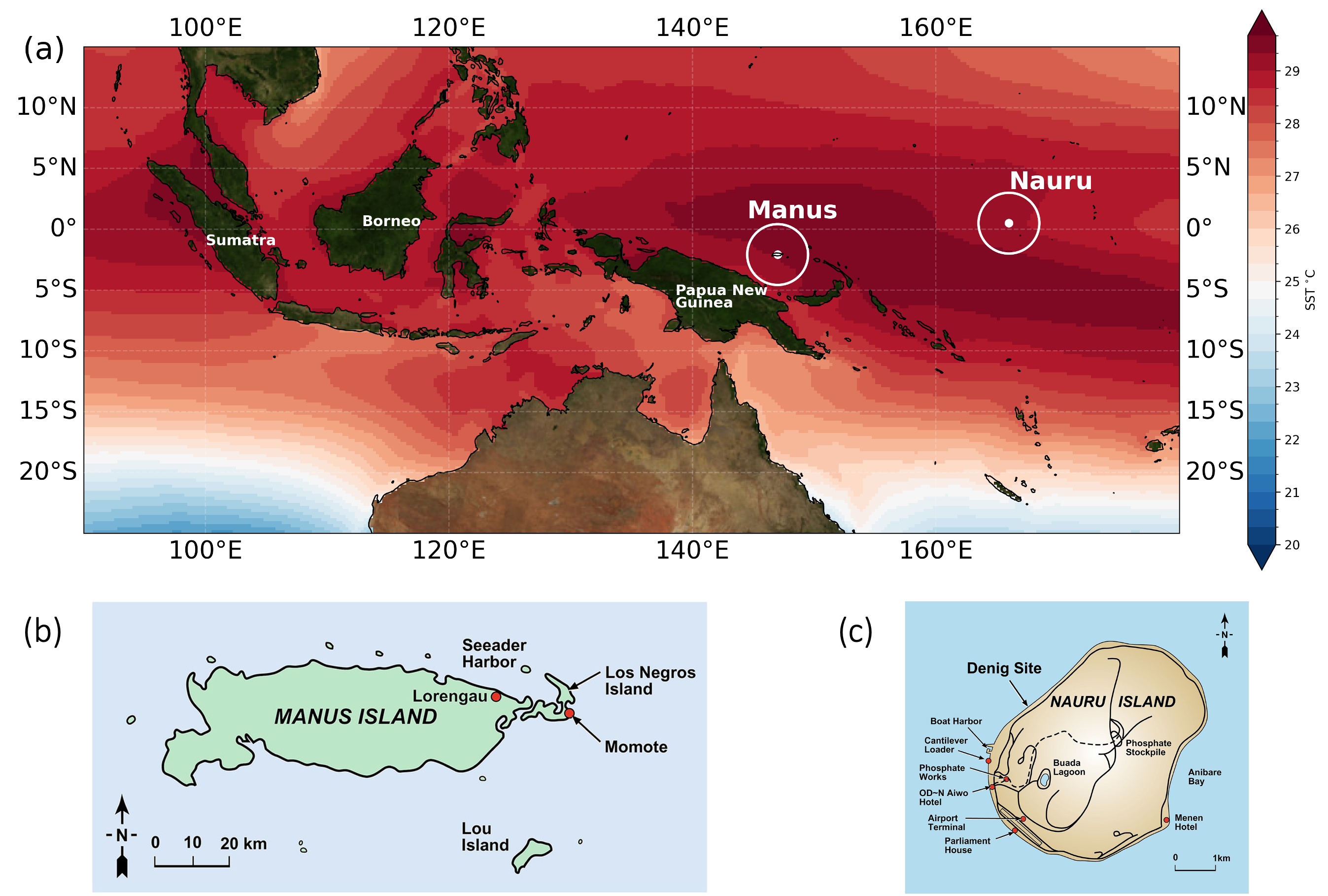Exploring the Land-Sea Breeze Circulation and its Association with Moist Static Energy Using TWP ARM Observations
Principal Investigator
Ray Pallav
— Florida Institute of Technology
Co-Investigator
Michael Splitt — Florida Institute of Technolog
Collaborators
Samson Hagos — Pacific Northwest National Laboratory
Nirmal Alex — Florida Institute of Technology
Jason Brunicke — Florida Institute of Technology
Abstract

The land-sea temperature contrast driven by the diurnal cycle of solar radiation leads to strong land-sea breeze circulations over tropical islands and causes a distinct diurnal cycle of precipitation. Past studies on land-sea breeze circulation were often limited to large tropical islands, relied primarily on reanalysis/model outputs, and overlooked the diurnal variation in moist static energy (MSE), crucial for understanding tropical convection dynamics. Recently, DOE’s ARM facility released 15-years (2000-2014) of value-added radiosonde and microwave radiometer products (INTERPSONDE) that provide sub-hourly vertical profiles of winds (zonal and meridional), temperature, relative humidity, and pressure. This high-frequency dataset provides an unprecedented opportunity to explore the land-sea breeze circulation and its association with MSE at the diurnal timescale.
Therefore, the overarching theme of this research is to systematically analyze the evolution of land-sea breeze circulation and its association with the diurnal cycle of MSE and precipitation using ground-based, long-term, high-quality observations from DOE ARM sites on two small equatorial islands in the tropical Western Pacific (TWP), Manus and Nauru. To the best of our knowledge, this will be the first study using long-term, in-situ observations to explore the diurnal variation in MSE over tropical islands. Our objectives are threefold: (i) to explore the physical mechanisms underlying the influence of land-sea breeze circulation on the diurnal cycle of MSE and precipitation across different seasons; (ii) to investigate how major climate drivers, such as the Madden-Julian oscillation, modulate the relationship between land-sea breeze, MSE, and precipitation; and (iii) to assess the role of the free troposphere in shaping the diurnal evolution of vertically-integrated MSE.
The convection in the TWP influences global atmospheric circulation and impacts the predictability of a host of extreme events affecting the U.S. By focusing on the association between land-sea breeze and vertical profiles of MSE at the diurnal scale, our work aims to better models and predictions in the TWP, and to improve decision-making in our communities across various timescales.

